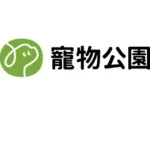In response to heightened U.S. export controls, Nvidia is reportedly gearing up to supply a new series of “special supply” AI chips to China, adjusting its specifications to circumvent restrictions. This move, which involves replacing the export-restricted H800, A800, and L40S series, is expected to be emulated by industry giants Intel and Advanced Micro Devices (AMD), with Taiwan Semiconductor Manufacturing Company (TSMC) playing a pivotal role in production.
According to China Jiwei Network, Nvidia has managed to sustain its wafer production through TSMC, even amidst the stringent U.S. export controls on China’s chip manufacturing industry. The focus is now on meeting the demand for the H100 processors. However, challenges such as capacity constraints with CoWoS (Chip-on-Wafer-on-Substrate) technology have led to an extreme shortage of this processor.
Sources indicate that Nvidia has already placed orders with TSMC for AI processors destined for the Chinese market. These orders, characterized as ‘super hot run’, are scheduled for fulfillment in the first quarter of 2024. Intel is also reportedly planning to resume supplying a modified version of the RTX4090 chips to China next year, tailored to comply with U.S. export regulations.
Tom’s Hardware, an American IT news website, advises caution regarding these unofficial reports. However, the significant aspect is Nvidia’s development of AI and high-performance computing (HPC) GPUs specifically for the Chinese market, adhering to U.S. export rules. These products are anticipated to launch in the first quarter of 2024.
The specifics of the GPUs TSMC will manufacture for Nvidia’s Chinese clientele remain uncertain. Rumors suggest that the AI and HPC GPU series for China may include models like HGX H20, L20, and L2. Nvidia might reduce performance by altering the GPU’s microcode or by implementing certain hardware modifications, without changing the core design or creating a new GPU with an alternate configuration.
This strategic shift by Nvidia, followed by Intel and AMD, highlights the evolving dynamics of the global semiconductor industry amidst geopolitical tensions. TSMC’s role as a key foundry partner for these AI chip suppliers underscores its importance in the global supply chain and the technological adaptations companies are making in response to regulatory challenges.



